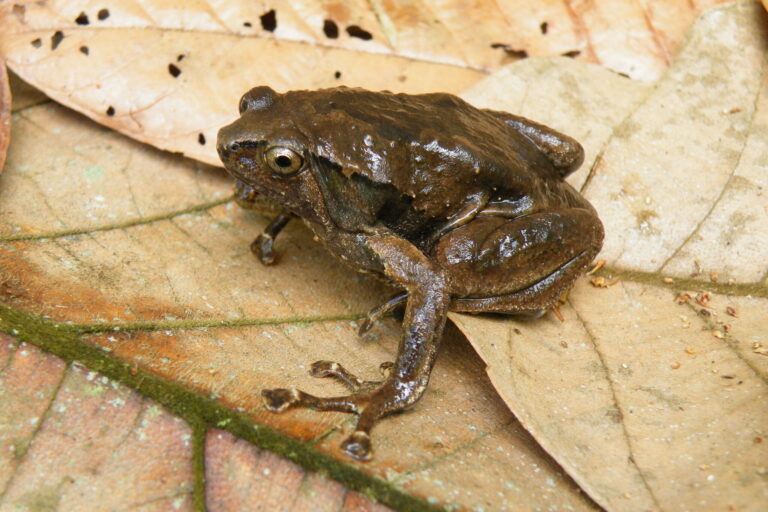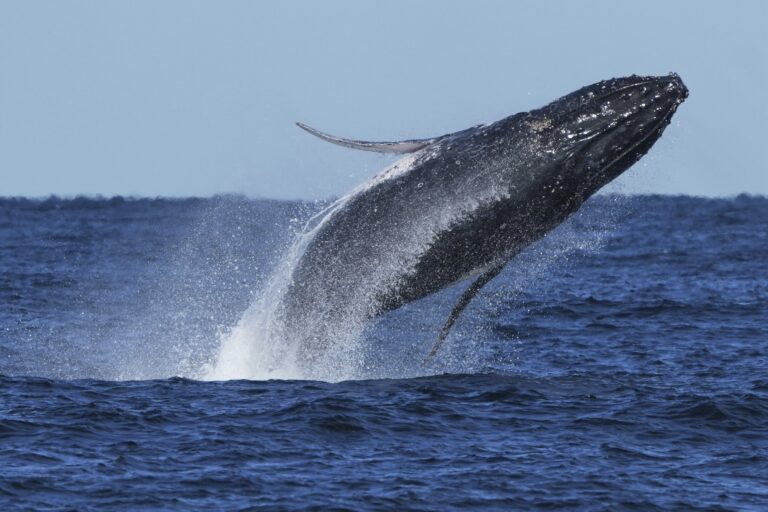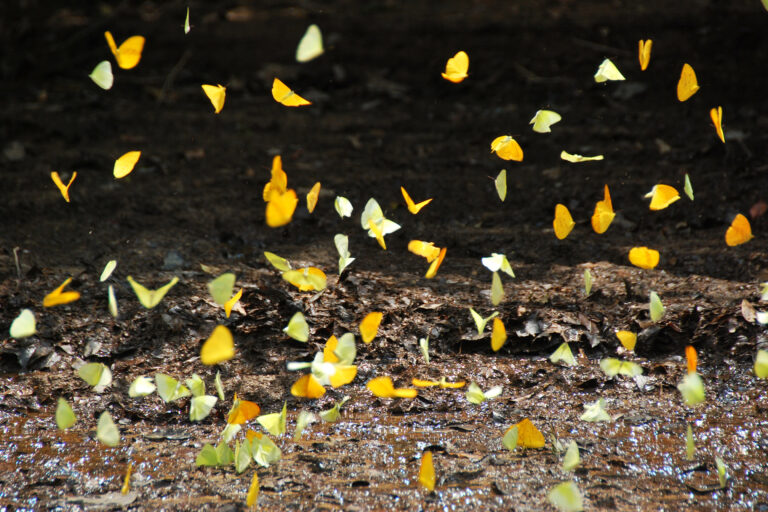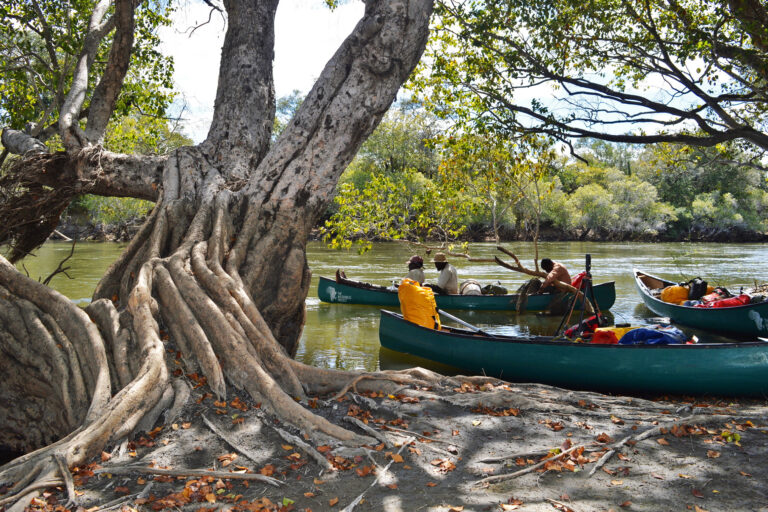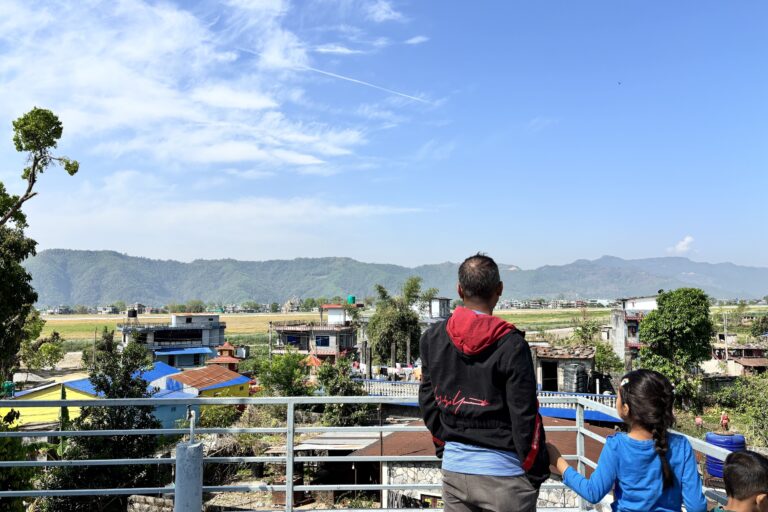- Expeditionlab’s GENE is a fusion of laboratory equipment and do-it-yourself (DIY) technological components adapted to conduct DNA extractions, amplifications, and sequencing outside of a standard laboratory setting.
- Researchers traveled to the Kabobo Massif in the Democratic Republic of Congo to collect wildlife samples and test the process of species’ identification in the field using Gene.
- The Expeditionlab team faced a host of challenges, including a shortage of electricity and hot, humid tropical weather, for which they successfully adapted the portable laboratory.

Photo credit: Marina Moreno
An international team of researchers journeyed into the jungles of the seldom-traveled Kabobo Massif in March 2017 along the shores of Lake Tanganyika in the Democratic Republic of Congo (DRC) to test the limits of DNA extraction and sequencing in the field with a revolutionary laboratory kit known as Gene.
The researchers are part of the Expeditionlab project, a joint initiative of the Department of Tropical Biodiversity at the Museum of Science of Trento (MUSE), the Department of Biotechnology at the University of Verona (IT), and the Wildlife Conservation Society (WCS). Their mission is to develop the GENE system that fuses rugged and portable laboratory equipment with DIY technological components adapted to conduct DNA extractions and sequencing outside of a standard laboratory setting.

Photo credit: Expeditionlab
According to Expeditionlab, “The components of Gene are a thermocycler, developed by Biodiversa that allows DNA extraction, purification and amplification and a portable DNA sequencer MinION, developed by Oxford Nanopore Technologies, that allows sequencing the DNA. All these equipments work with a battery-powered device…This portable lab brings molecular analysis directly in the field, revolutionizing biological exploration”.
The tropical forests of the Kabobo Massif bore a host of challenges for the Expeditionlab team, from the dense humidity of the jungle to the need for electricity to power Gene.
The researchers set up four camps across the study area, collecting wildlife samples while trekking through the jungle. In addition to scat, feathers, and scales, the researchers also collected specimens where the animal was thought to be a new species in this poorly studied region.

Mongabay-Wildtech spoke with Dr. Ana Rodriguez-Prieto, an evolutionary biologist and geneticist with Expeditionlab, about overcoming the challenges of the expedition.
According to Rodriguez-Prieto, the goal was to sequence the DNA of two reptile, two amphibian, and two mammal species, to determine “if Gene could be used to make a whole stream of biodiversity in one place”. The location of the four camps allowed the researchers to get a full view of all the environments surrounding the Kabobo Massif, which made the species “quite easy to find.” However, adapting Gene to work in the field was no easy task.
“We are doing extraction, quantification, [and] amplification like in the lab, we just adjust all the protocols and all the reagents [a substance used in the process of chemical analysis] and all the devices to work in a tropical environment,” noted Dr. Rodriguez-Prieto. “That means that we tried to use reagents that don’t need a freezer to be conserved…Normally, [with] the reagents in the lab, you have to maintain the [temperature] at minus twenty or forty degrees.”
Perhaps the most difficult obstacle facing the Expeditionlab researchers was the shortage of power. “For the devices, the big problem was the lack of electricity, so all the devices had to be charged with portable batteries,” described Rodriguez-Prieto.
“Portable batteries work at twelve volts, so we modified the devices in order to use them at twelve volts…Normally, complete DNA analyses last seven or eight hours, so you have to charge everything and power everything [ahead of time]. We made a combination of car batteries and portable batteries, and in this case, in the Congo, because we are [testing] different protocols and situations, we also [brought] a generator just to use as a back-up in situations…This situation was really hard, because we tried to be without electricity for a month — the normal situation that we are imagining for Gene to work is for a week or five days, so with portable batteries, you can manage this situation.”
The high temperatures of the tropics and the shortage of power were not the only challenges facing the team. According to Rodriguez-Prieto, “The second huge problem was the humidity in the air. All these devices in the lab have fans to make the process hotter or cooler, but if you use these devices in an environment with a lot of water in the air, they can’t cool or warm properly, so we modified the devices with powerful fans, just to [prevent] dampness.”
Despite the heat, solar power was not a stable energy source for the researchers, as dense forest shrouded the field stations from sunlight.
“We are trying to test another kind of system to recharge everything with water power — a system that you can [install] in the river. We are interested in biodiversity in general, but we are working mostly with amphibians and reptiles, so our campsites are normally nearby rivers or streams. We can use water power to recharge. We are not ready for this step by now, but we are trying to develop it”, stated Rodriguez-Rodriguez-Prieto.

Photo Credit: Anna Sustersic
The Gene device used in the process of DNA extraction and amplification works separately from the team’s nanopore sequencing device, MinIon, which can be used to determine a final DNA sequence from a given sample to identity a particular species.
According to Rodriguez-Prieto, how one uses the MinIon sequencer “depends on the question you want to answer in the jungle. If you’re interested, for example, to know the name of this species of animal or organism in your hands, you need to have a sequencer with you to get the final name…But, imagine if you’re interested in knowing the sex of a bird, for example. [After] doing a DNA extraction and amplification with a protocol, you can stop your analysis.”
She adds that the “MinIon sequencer could analyze ninety-six sequences at the same time,” making it an efficient and powerful tool for use in the field.

Photo credit: Anna Sustersic
The DNA sequences can be compared with those from the GenBank database in order to identify a sample’s species. The Expeditionlab team was able to compare the sequences offline by downloading the section of GenBank that is needed, storing the data on hard drives, and BLASTing them to compare the sequences.
The team’s results confirm that sequencing in the field is possible. Despite all of the adaptations they have made so far, Rodriguez-Prieto said that there is still work to be done.
“We have to improve the packaging, reduce weight, try to find a more efficient system of electrical batteries, and all these things,” she noted. “We have to develop the technological part now.”
Adapting the portable Gene lab to improve efficiency will require the team to modify protocols and account for working in a range of environments, such as desert ecosystems.
The Gene field-based laboratory will help researchers to avoid the challenge of obtaining permits for exporting genetic samples out of a country and reduces the risk of reduced sample quality through the exporting process.
Dr. Rodriguez-Prieto’s hope is that the Gene lab will not only ease the time and efforts of field researchers, but also have a positive impact on policy needed to protect conservation areas, by allowing researchers to rapidly sequence numerous species’ DNA in the field, the technology helps to quickly assess the uniqueness of the genetic makeup of the area’s plants and animals and thus demonstrate its role in maintaining native biodiversity.
Banner image: A snake suspends from a tree in the jungles of the Kabobo Massif. Photo credit: Michele Menegon.






